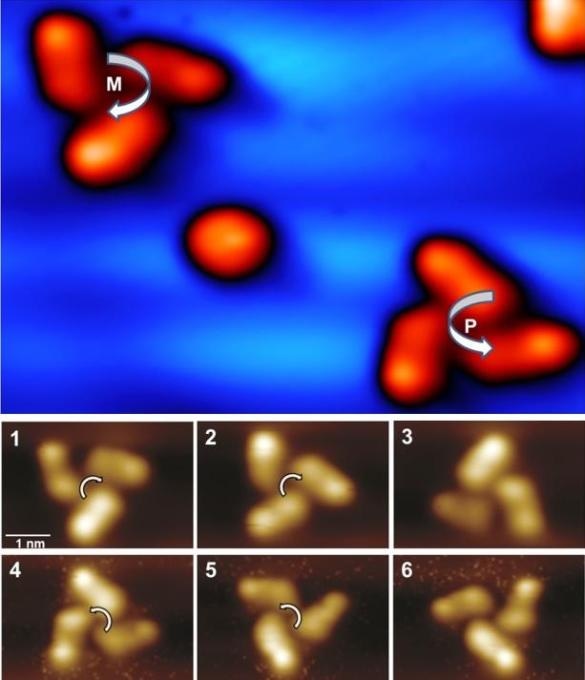Aug 21 2019
A group of researchers from Ohio University, Argonne National Laboratory, Universitié de Toulouse in France, and Nara Institute of Science and Technology in Japan, guided by Ohio Professor of Physics Saw-Wai Hla and Prof. Gwenael Rapenne from Toulouse, created a molecular propeller that induces unidirectional rotations on a material surface upon being energized.
 A look at how the propeller is made up and the unidirectional rotations. (Image credit: Saw-Wai Hla)
A look at how the propeller is made up and the unidirectional rotations. (Image credit: Saw-Wai Hla)
By nature, molecule propellers are crucial in various biological applications such as swimming bacteria and intracellular transport. However, synthetic molecular propellers, such as the one developed now, can function even in severe environments and under precise control. The new advancement is a multi-component molecular propeller exclusively designed to function on solid surfaces.
The small-sized propeller includes three components — a tri-blade propeller, a ratchet-shaped molecular gear that forms the base, and a ruthenium atom that serves as an atomic ball bearing linking the propeller and the base. The propeller has a width of only about 2 nm and a height of 1 nm.
What is special about our propeller is its multi-component design that becomes chiral on the gold crystal surface, i.e. it forms right- or left-tilted gears. This chirality dictates the rotational direction when energized.
Saw-Wai Hla, Professor of Physics, Ohio University
Moreover, Hla and his colleagues have mechanically manipulated and recorded the stepwise rotations of the molecule. This allows them to gain insights into the minute motions at the single-molecule level, thereby enabling direct visualization of the individual molecular propellers’ rotation from images obtained at each rotation step.
When an electric field is applied, the rotation takes place through the transfer of electron energy or through mechanical force with the tip of a scanning tunneling microscope. Researchers can control the propeller’s rotation by means of the power supply and switch it off by cutting off the energy.
The molecular propeller created as part of this study is intended to analyze the basic understanding of its working principle; however, molecular propellers such as this could find potential applications ranging from catalysts to medicine.
Recently, molecular machines have turned out to be a trending subject in nanotechnology as this field of research has gained considerable attention since the 2016 Nobel Prize in Chemistry was awarded for the “design and synthesis of molecular machines.”
Hla’s paper titled “A chiral molecular propeller designed for unidirectional rotations on a surface” has been published in Nature Communications.